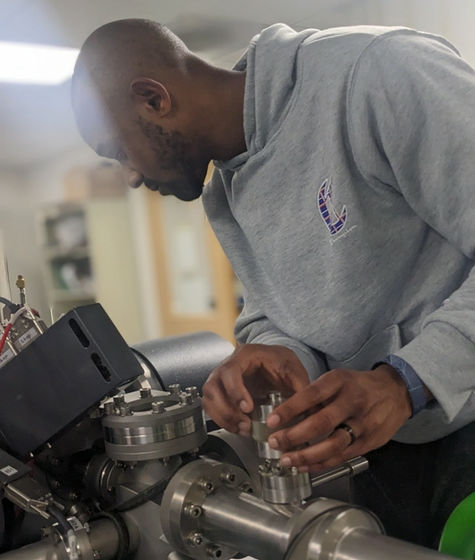Analysis of lunar rocks reveals alien material that calls established theory into question

Researchers at Brown University in the United States analyzed lunar rock samples collected by
Endogenous, yet Exotic, Sulfur in the Lunar Mantle - Dottin - 2025 - Journal of Geophysical Research: Planets - Wiley Online Library
https://agupubs.onlinelibrary.wiley.com/doi/abs/10.1029/2024JE008834

Scientists Cracked Open a Lunar Rock And Found a Huge Surprise : ScienceAlert
https://www.sciencealert.com/scientists-cracked-open-a-lunar-rock-and-found-a-huge-surprise
During the 1960s and early 1970s, NASA's Apollo missions returned numerous samples from the moon. According to NASA , the six Apollo missions brought back 2,196 samples, weighing a total of 382 kg of lunar material. Some of the samples were sealed and preserved, anticipating that more advanced technology would allow for much more detailed analysis.
A research team led by planetary scientist James Dottin of Brown University retrieved one of the preserved samples for the first time in 50 years and used mass spectrometry to precisely measure the sulfur isotope ratios within the sample. Sulfur is an important element for understanding the geological history of celestial bodies, and measuring sulfur isotope ratios can help trace the origin, formation mechanism, and age of the sample.

The rock samples contained fragments of

However, in other parts of the sample, the 33S isotope ratio was surprisingly reduced. The research team said they had never observed such a low isotope ratio in a sample before. 'My first thought was, 'Oh my God, that can't be true,'' Dottin said. 'We ran a second analysis to make sure we'd done it properly, and it confirmed that the results were correct. This is truly amazing,' he said.
The analysis suggests two intriguing possibilities. First, sulfur, which was previously thought to have been acquired from the mantles of terrestrial planets, could have been formed on the Moon itself. The Moon is thought to have been covered by a magma ocean when it was first formed. As this ocean cooled and crystallized, sulfur may have interacted with ultraviolet light in the atmosphere, causing isotopes to change.
Another popular theory about the formation of the Moon is that it was created when the newborn Earth collided with a Mars-sized object called Theia . A second possible scenario is that the 33S isotope, which the Moon would not have had, was left behind by Theia. 'On Earth, plate tectonics exchanges materials from the surface to the mantle, but the Moon does not,' Dottin said. 'Therefore, the idea that some kind of exchange mechanism existed on the early Moon that caused sulfur changes is exciting.'
This discovery will prompt a reexamination of the origin of the Moon and its relationship to Earth, and also casts doubt on the conventional wisdom that the Earth and the Moon were made of almost the same materials. It is hoped that by analyzing more samples from the Moon, Mars, and other asteroids in the future, we will gain a better understanding of the early formation of the Moon and the mystery of sulfur.
Related Posts:
in Free Member, Science, Posted by log1e_dh







